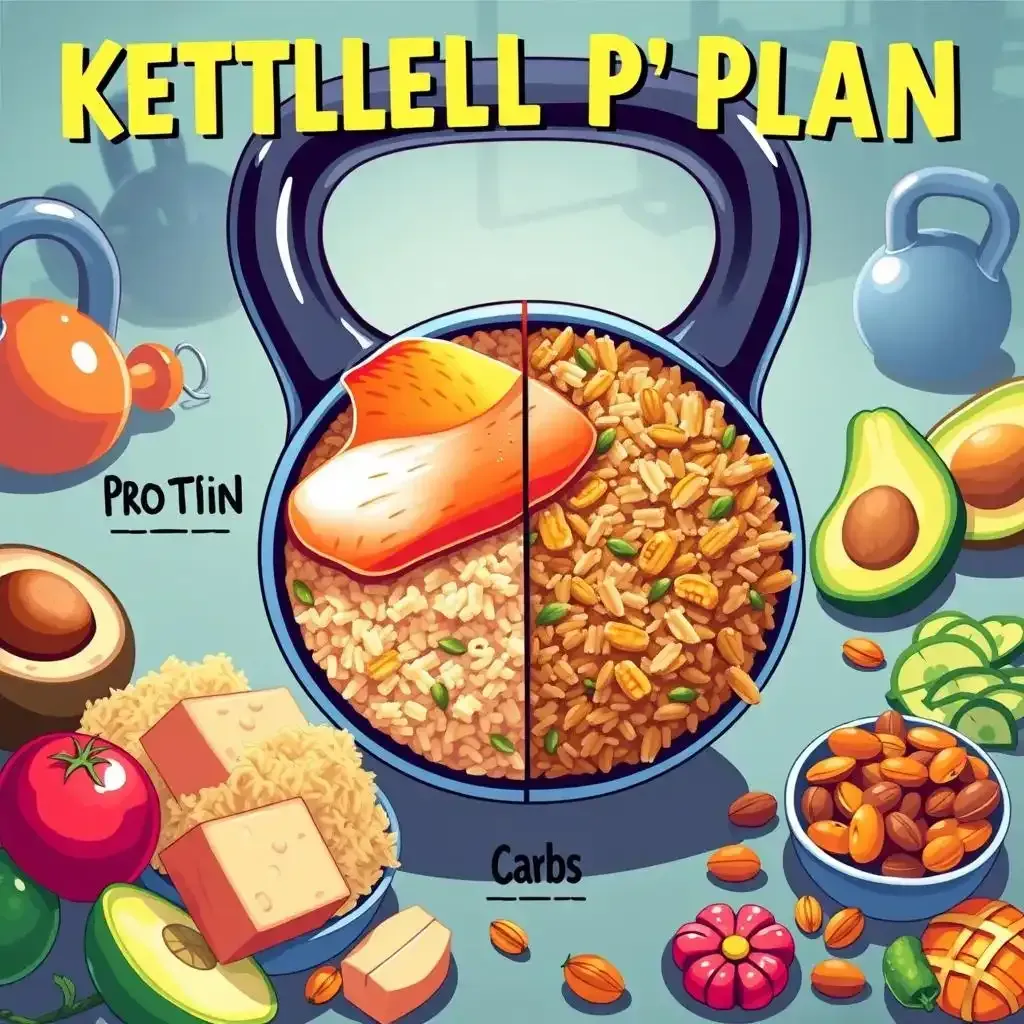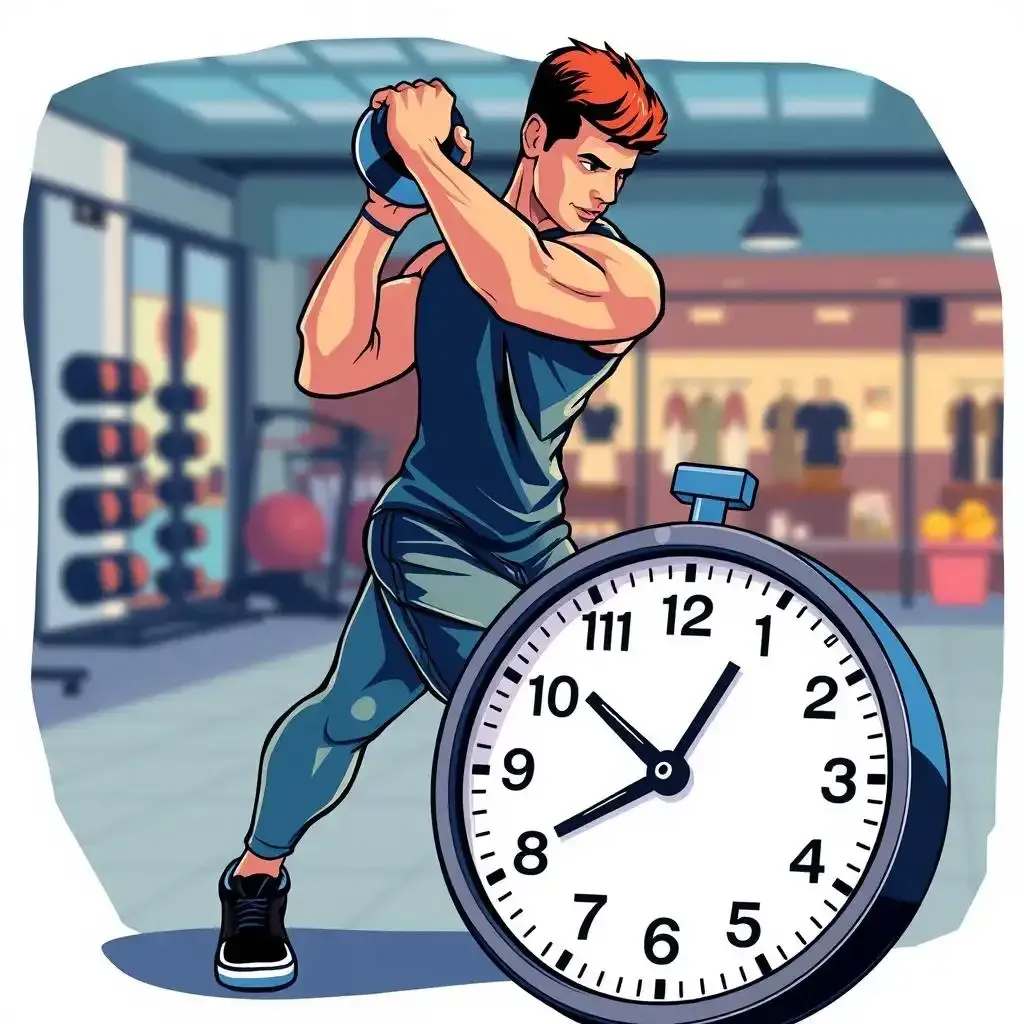Table of Contents
So, you're diving headfirst into the world of kettlebells? Awesome! Getting stronger and more toned is a fantastic goal. But guess what? Your diet plays a HUGE role. It's not just about swinging that kettlebell; it's about fueling your body to handle the intense workouts and recover properly. We're not talking about strict diets or crazy restrictions here. Think of it as smart eating for serious results. This article, packed with practical kettlebell nutrition tips, will guide you on how to eat to support your kettlebell progression. We'll cover everything from the right balance of food groups to when you should eat before and after those killer workouts. Get ready to level up your fitness game, both inside and outside the gym! Check out kettlebellworkout.homes for more amazing fitness tips.
Fueling Your Kettlebell Fitness: Kettlebell Nutrition Tips for Beginners

Fueling Your Kettlebell Fitness Kettlebell Nutrition Tips For Beginners
Laying the Foundation: What to Eat
Okay, so you're ready to rock those kettlebells, right? Awesome! But before you even think about grabbing that iron beast, let's talk about fueling your body. Think of your body like a super-powered car – it needs the right kind of fuel to perform at its best. We're not talking about fancy energy drinks or weird supplements. We're talking about good, honest-to-goodness food.
First things first: balance is your best friend. Imagine a plate divided into sections. One section is for protein (think chicken, fish, beans – the stuff that builds and repairs your muscles). Another section is for carbs (think whole grains, fruits, and veggies – they give you the energy to swing that kettlebell). And the last section is for healthy fats (think avocados, nuts, olive oil – they keep everything running smoothly). Don't starve yourself! You need energy for those intense workouts. Remember, you are what you eat, so make your meals count!
- Protein: Chicken, fish, beans, lentils
- Carbs: Brown rice, sweet potatoes, fruits, vegetables
- Healthy Fats: Avocados, nuts, olive oil
Want to know more about setting up a killer beginner kettlebell routine? Check out our beginner kettlebell routines guide!
Timing is Everything: Pre- and Post-Workout Fuel
Now, let's talk timing. It's not just *what* you eat, but *when* you eat. About an hour before your kettlebell session, grab a small snack with some protein and complex carbs. Think a banana with a handful of almonds, or some Greek yogurt with berries. This will give you sustained energy without evaluating you down. Imagine it as prepping your car for a long drive – you wouldn't want to start with an empty tank, would you?
After your workout? That's your body's chance to recover and rebuild. You've just put your muscles through the wringer, so give them what they need: another dose of protein and carbs. A protein shake with some fruit, or a chicken salad sandwich on whole-wheat bread, are great choices. Think of this as giving your car a much needed tune-up after a long process. Refuel and repair!
Meal Timing | What to Eat | Why It's Important |
|---|---|---|
1 hour before workout | Protein & Complex Carbs | Sustained energy |
After workout | Protein & Carbs | Muscle recovery & repair |
Need more easy kettlebell exercises to get started? Our easy kettlebell exercises guide is perfect for you!
Kettlebell Nutrition Tips: Macronutrient Balance for Optimal Performance
Hey there, fellow kettlebell enthusiast! So, you're crushing those workouts, feeling the burn, and seeing results, right? Fantastic! But let's be real, your muscles are screaming for the right fuel. It's like trying to run a marathon on stale crackers – not gonna happen! You need the right mix of nutrients to build that strength and endurance. That's where macronutrients come in – think of them as the ability-packed ingredients in your fitness recipe. We're talking protein, carbohydrates, and healthy fats – the holy trinity of muscle growth and recovery.
Protein is your muscle-building superhero. It's the building block for those gorgeous, powerful muscles you're working so hard to create. Chicken breast, fish, lentils – these are your go-to sources. Carbs are your energy stars, fueling those intense kettlebell swings. Think of them as the high-octane fuel for your fitness engine! Choose complex carbs like brown rice, sweet potatoes, and whole grains – they’ll give you sustained energy, unlike those sugary snacks that lead to a crash-and-burn. And don't forget healthy fats – they're crucial for hormone production and overall health. Avocados, nuts, and olive oil are your best friends here. They keep everything running smoothly, lubricating your body's amazing machinery.
- Protein: Aim for roughly 1 gram of protein per pound of bodyweight.
- Carbs: Prioritize complex carbs for sustained energy.
- Healthy Fats: Include sources like avocados, nuts, and olive oil.
Remember, it's not about strict dieting; it's about smart eating. Finding the right balance of these macronutrients is like finding the perfect recipe – a little tweaking here and there to suit your body's needs. Experiment, listen to your body, and find what works best for you. Need some inspiration for your next workout? Check out our beginner kettlebell workouts!
I remember when I first started, I was so focused on the workouts themselves that I completely neglected the importance of nutrition. I was eating whatever I could grab, which was mostly fast food and sugary drinks. The result? I was constantly tired, my muscles weren't recovering properly, and my progress was slow. Once I started paying attention to my macronutrient intake, the difference was incredible. My energy levels soared, my workouts were more intense, and I saw much faster results. It's like adding turbo boost to your kettlebell game!
Let's talk about portion sizes. This isn't about restricting yourself; it's about being mindful. Think of your plate as a canvas – you want a beautiful, balanced masterpiece, not a chaotic mess. Aim for a balance of protein, carbs, and healthy fats, and adjust portion sizes according to your activity level and goals. Need more tips on building a solid foundation for your kettlebell trip? Try our kettlebell basics guide!
Macronutrient | Function | Examples |
|---|---|---|
Protein | Muscle building and repair | Chicken, fish, beans, lentils |
Carbohydrates | Energy | Brown rice, sweet potatoes, whole grains |
Healthy Fats | Hormone production, overall health | Avocados, nuts, olive oil |
Hydration and Electrolytes: Essential Kettlebell Nutrition Tips
Okay, so you've nailed the food thing – good job! But there's another super important player in the kettlebell game: hydration. Think of your body as a high-performance engine – it needs the right fluids to run smoothly. Dehydration is like trying to run a race with a leaky radiator – you'll sputter and overheat fast! You need to constantly sip water throughout the day, not just gulp it down when you're already parched. I usually keep a giant water bottle with me wherever I go, and I sip on it constantly.
But water isn't the whole story. When you sweat during intense kettlebell workouts, you lose not only water but also electrolytes – these are minerals like sodium and potassium, which are essential for muscle function and nerve impulses. Think of electrolytes as the tiny spark plugs that keep your body's engine firing. Losing too many can lead to muscle cramps, fatigue, and even dizziness. That's why I always have an electrolyte drink handy, especially during longer or more intense workouts. For a quick, simple electrolyte boost, try adding a pinch of salt to your water. It sounds weird, but it works!
- Drink water consistently throughout the day.
- Replenish electrolytes lost through sweat.
- Consider an electrolyte drink during intense workouts.
Want to know more about building a killer kettlebell workout routine? Check out our guide!
Now, let's talk about how much water you should drink. There's no magic number, as it depends on factors like your size, activity level, and climate. But a good rule of thumb is to drink half your body weight in ounces of water each day. So, if you weigh 150 pounds, aim for 75 ounces of water. Listen to your body – if you're thirsty, drink! Don't wait until you're parched. I also like to check the color of my urine – pale yellow is good; dark yellow means I need more water. It’s a simple way to gauge my hydration level.
Electrolyte drinks can be helpful, but don't overdo it. Many store-bought drinks are loaded with sugar, which can actually hinder your performance. Look for options with minimal added sugar or make your own by adding a pinch of salt and some fruit juice to your water. I often add a squeeze of lemon or lime for a refreshing twist. It's all about finding what works best for you and your taste buds. Keep experimenting until you find your perfect hydration solution!
Hydration Strategy | Before Workout | During Workout | After Workout |
|---|---|---|---|
Water Intake | 16-20 oz | 4-8 oz every 15-20 minutes | 20-24 oz |
Electrolytes | Optional | Consider electrolyte drink | Replenish with food or drink |
Need some easy kettlebell exercises to get started? Our guide is perfect for you!
Kettlebell Nutrition Tips: Timing Your Meals for Best Results

Kettlebell Nutrition Tips Timing Your Meals For Best Results
Pre-Workout Meal | Timing | Why It Matters |
|---|---|---|
Grilled chicken breast with brown rice and steamed vegetables | 1-2 hours before workout | Provides sustained energy and helps ability through kettlebell swings |
After your workout, it's time to refuel and recover. Aim to eat a meal that includes protein and complex carbohydrates within 30-60 minutes after your workout. This will help your muscles recover and rebuild. Try a meal like a protein shake with fruit, or a chicken salad sandwich on whole-grain bread. Experiment with different foods to find what works best for you.
- Grilled chicken breast with quinoa and steamed broccoli
- Protein shake with banana and almond milk
- Chicken salad sandwich on whole-grain bread
Remember, everyone's nutritional needs are different, and it may take some trial and error to find the right foods and timing that work best for you. For more tips on kettlebell nutrition, check out our guide. By fueling your body with the right foods at the right time, you'll be able to ability through your kettlebell workouts and achieve your fitness goals. Happy swinging! For more information on how to create a killer kettlebell workout routine, check out our guide.
Final Thought
Remember, consistent effort in both your workouts and your nutrition is key. Small, sustainable changes to your diet can make a huge difference in your kettlebell progress. Don't be afraid to experiment, listen to your body, and adjust your approach as needed. And most importantly, enjoy the process! Happy lifting!